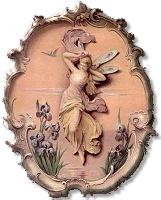 Victorian society was highly stratified. The rich lived in sumptuous comfort. Prosperity was in the hands of only a few ... wealth viewed as visible sign of virtue ... increasingly the wealthy were viewed as 'decadent aristocrats’
Victorian society was highly stratified. The rich lived in sumptuous comfort. Prosperity was in the hands of only a few ... wealth viewed as visible sign of virtue ... increasingly the wealthy were viewed as 'decadent aristocrats’the higher up the social ladder the more confining women’s clothes became (which deformed their internal organs causing “the vapors”, fainting, etc.) ...


working class women did not wear corsets unless there was a very special occasion
working class = the individuals that actually PRODUCED the wealth = malnutrition, dangerous working conditions
Child Labour
1830 = 560 cotton mills in Lancashire employed 110,000+ workers ...which 35,000 were children (some as young as 6 yrs old)
children received 10 times less than adults
made sense to employ children & not adults
"scavengers" = young children crawled beneath machinery while they operated to
pick up loose cotton ... many caught in machinery & died ... those that survived
permanently stooped in adultood

Average working day = 14 hours ... many worked much longer

attitude of other classes regarding working class = laisser faire
poor told it was their fault they were poor & that God wanted them poor
Terrible poverty means there is no shortage of beggars. It would probably not be off the mark to say the Victorians tended to worship at the altar of success and money.

There is a huge gap between the classes. Mrs Isabella Beeton's 1861 Book of Household Management reveals many servants are required to prepare a meal.
Social reformer Charles Booth (1840-1916) took 18 years to write up his findings in a survey called The Life and Labour of the People in London which was finally published in 1903.
He divided his work into several sections: high-paid labour, regular standard earners, small regular earners, intermittent earners, casual earners, 'the lowest class’
• regular standard earners = largest group, benefit most, have fewer children, combination of more money and fewer children mean they have more leisure time
The Types of Poor:
Deserving poor = sparingly receive very little charity = work houses also called poor houses (which split up families)
Poor = most desperate and numerous class; approx. 1/4 of urban population; some unemployed; some criminals; live a precarious existence

Henry Mayhew's London Labour and the London Poor (1851-62) gives tons of examples of begging, hawking all manner of goods or even collecting and selling dog droppings
1889, Charles Booth says,
“Their life is the life of savages.”
“Their life is the life of savages.”
1901 York (England) = 27% of the people are in deep poverty and living in squalid, even deadly slum conditions
[Source: Quaker philanthropist and chocolate manufacturer Seebohm Rowntree (1871-1954), in his book Poverty: A study of town life]
~ from the notes of Lady Victorian Historian




